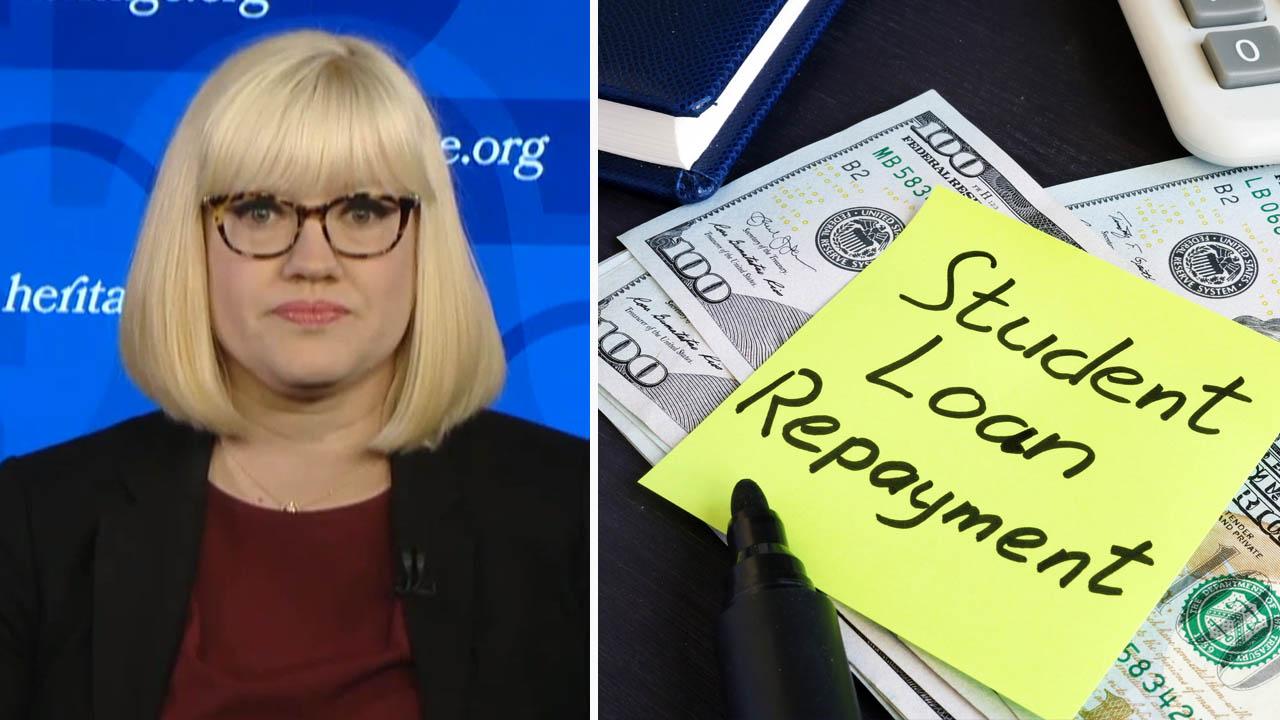Lindsey Burke: A major threat to our economy -- The student loan system is underwater
Many consider a college degree to be a prerequisite for getting a white-collar job. And it still holds true that college graduates tend to earn about twice what high school graduates earn annually. But in his new book "Restoring the Promise: Higher Education in America," economist Richard Vedder shows that going to college does not produce such a financial windfall for all students.
For starters, although median earnings are demonstrably higher for those with bachelor’s degrees than for those without, half – by definition – earn less than the median.
Moreover, Vedder found that more than one-third (37 percent) of college graduates are in jobs that only require a high school degree or less. Some 13 million recent college graduates ended up in a job that did not require a college degree, and most of them likely took on student loan debt to get there.
And then there are those who enroll in college but never graduate. Many of them have also taken out student loans along the way, leaving them saddled with burdensome debt at the onset of their working lives.
In 2017, the typical student loan borrower owed about $28,000. If these were mortgages instead of student loans, we’d say most of these students were underwater.
Not all of the blame for foolish borrowing can be cast on the student. Schools, guidance counselors, parents and popular media constantly reinforce the “necessity” of college. Employers largely follow suit, not always because they feel college graduates are more productive, but because college graduates are ubiquitous. When everyone has a bachelor’s degree, employers question what is wrong with the person who didn’t acquire one.
Enter the sheepskin effect – the idea that a bachelor’s degree is more of an expensive signaling device than an indicator of acquired skills and knowledge.
This shift in what Americans believe is required and what employers have fallen into the trap of requiring – a bachelor’s degree – has been underwritten in dramatic fashion by federal taxpayers. And that subsidization has itself greatly exacerbated the problem.
The easy money flowing out of Washington, D.C. in the form of federal student loans and grants has enabled and encouraged colleges to raise their prices profligately. A 2015 report from the Federal Reserve Bank of New York found that for every dollar in subsidized student loans, universities raised their tuition 60 cents. Open-ended federal subsidies have also led to a facilities arms race, where climbing walls, tiger grottoes and lazy rivers have come to be expected as campus amenities.
Apart from the 1944 G.I. Bill, the federal government had very limited involvement in higher education prior to 1965. But when President Lyndon B. Johnson signed the Higher Education Act of 1965 into law as part of his “War on Poverty,” he opened up the floodgates for federal student aid, making the first federally-guaranteed student loans available to the general public.
Federal taxpayers now underwrite more than $150 billion annually in federal student loans and grants, and college costs are higher than ever before. Federal higher education subsidies have not made college more affordable.
Cumulatively, Americans hold some $1.6 trillion in outstanding student loan debt today. And because the federal government originates and services nearly 90 percent of all student loans, American taxpayers – nearly one-third of whom do not hold bachelor’s degrees – remain greatly exposed to this outstanding debt. They foot the bill for loan forgiveness policies and defaults.
Higher education as it is currently structured – through a federally-backed accreditation regime and an open-ended federal subsidy system – is a drain on the economy. Innovative models, such as income share agreements and micro-degrees, are beginning to provide some needed alternatives on the margin.
But until the federal government steps aside and makes space for the private lending market to return, and for these innovative options to flourish, this academic albatross will continue to hang around the necks of millions of Americans. Dramatically reducing federal subsidies is the first step to relief.
Lindsey M. Burke is the Will Skillman fellow in education policy and director of the Center for Education Policy at the Heritage Foundation.
CLICK HERE TO GET MORE FOX BUSINESS




















